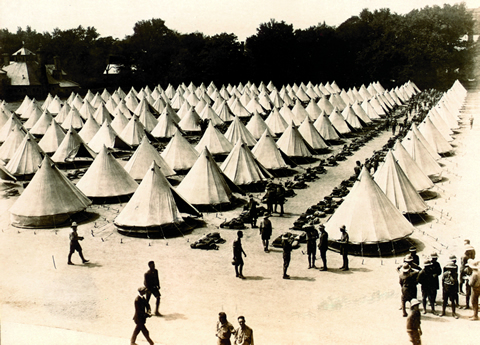In 1917, with the Great War raging in Europe, U of T president Robert Falconer turned over large portions of the downtown campus to the British government to establish the No. 4 School of Aeronautics. For 17 months, the St. George Campus was the location for all classroom training in North America for military pilots and aircrew. This photo, taken on back campus, shows some of the tents used by the airmen-in-training.
The first manned flight in Canada had only taken place in 1909, but gallant stories of fighter aces such as Billy Bishop had seized the Canadian popular imagination, and the short life expectancy of combat pilots meant there was no end of demand, either. The No. 4 School provided roughly two months of instruction in aerial photography, telegraphy, map reading and engine maintenance before cadets departed for flight training at aerodromes. By 1918, the school had taken over front and back campus, the engineering building, Convocation Hall, Hart House, Wycliffe College, Burwash Hall and most UC residences. Among the students was William Faulkner, who would go on to win a Nobel Prize in Literature. Future prime minister and alum Lester Pearson was an instructor.
After the armistice, many who started their pilot training at U of T would go on to open up the Canadian North, enabling the nation to map and explore those vast expanses for the first time from the air, as Canada’s first bush pilots.





